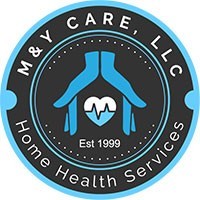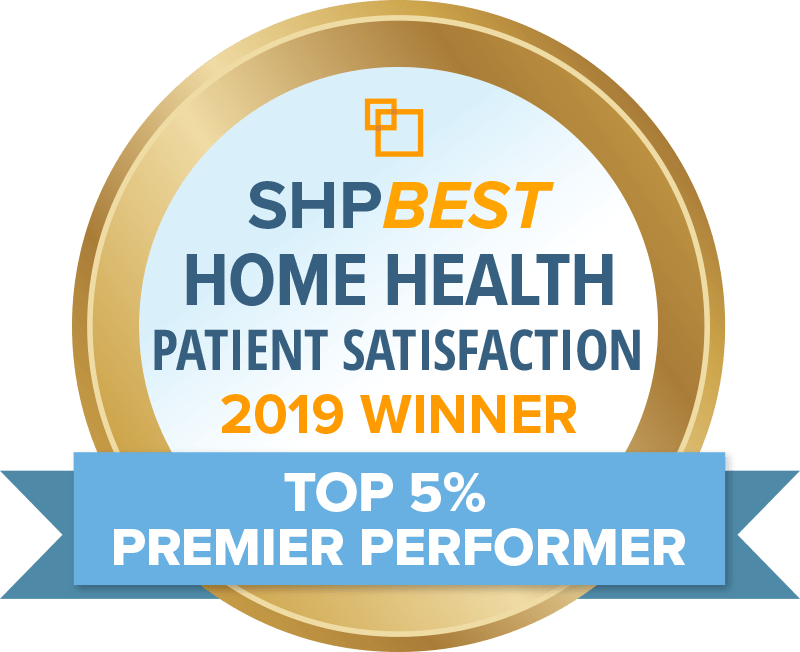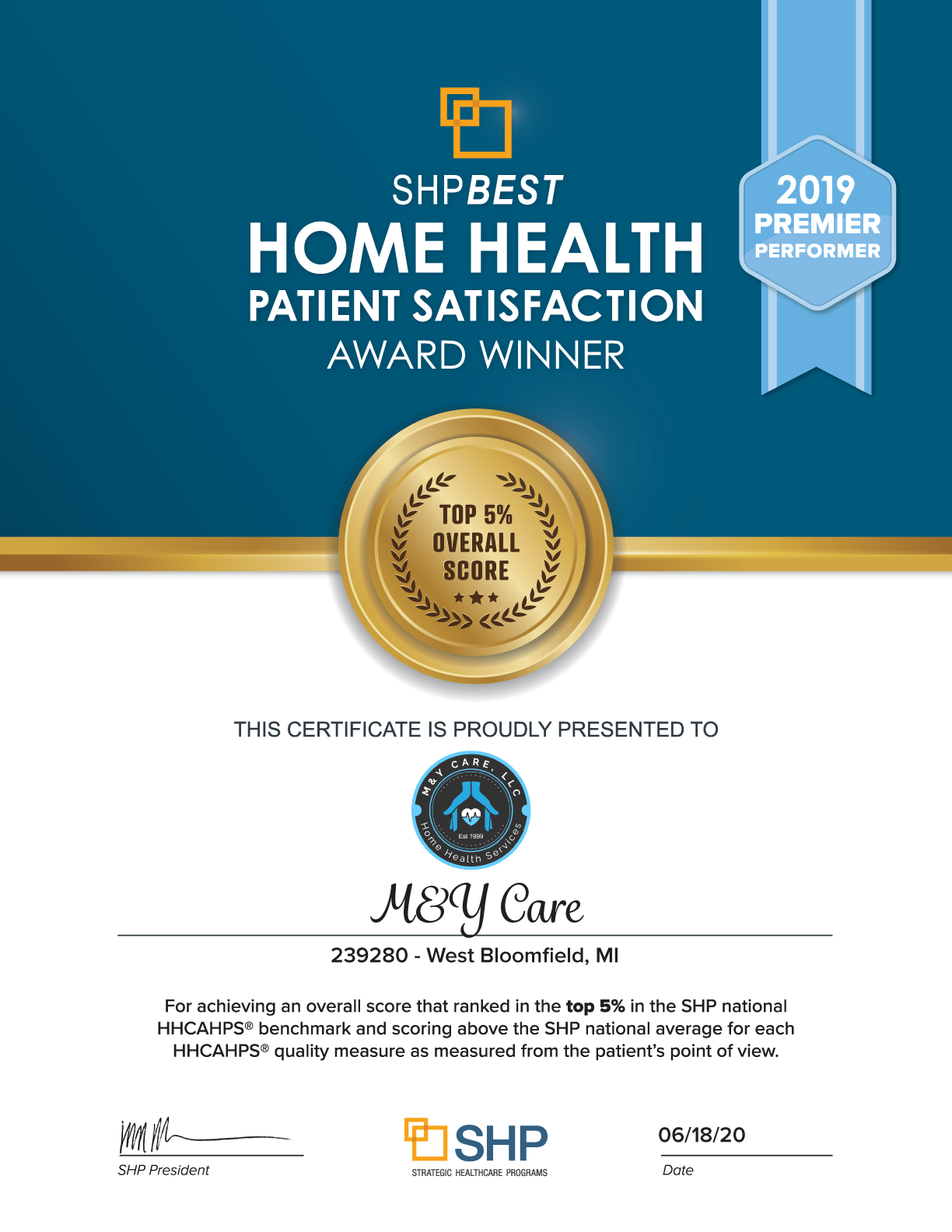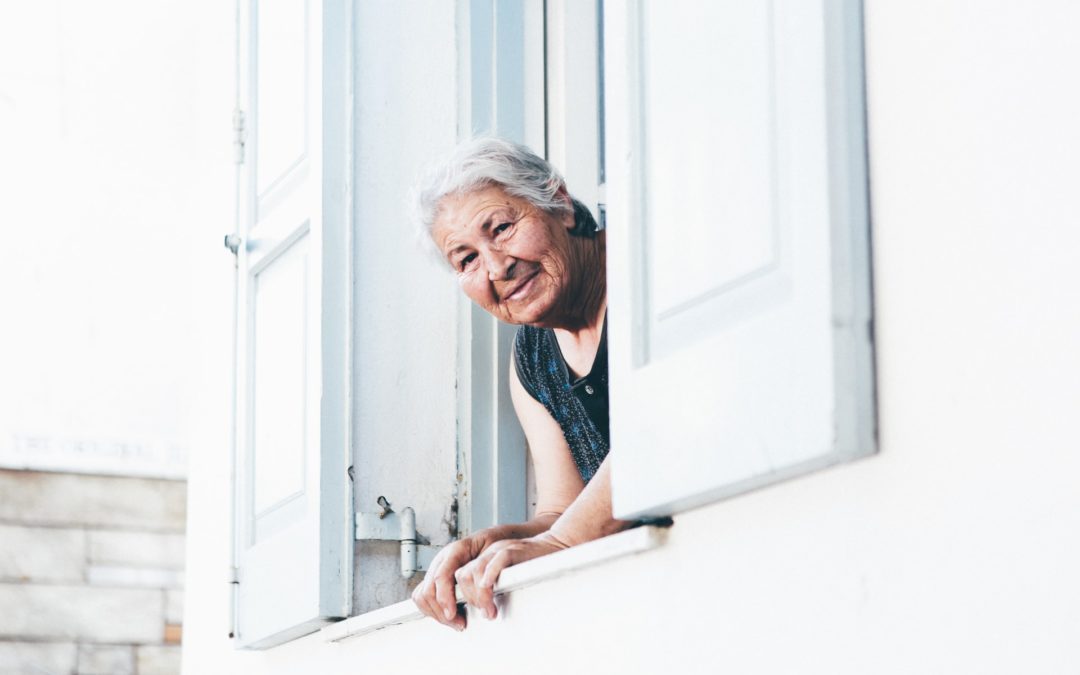
by M | Jul 1, 2020 | News |
In the span of less than four months, COVID-19 has killed around one in every 40 nursing home residents in the United States—some 32,000 people as of May 31, according to federal data. More than 600 nursing facility staff members have also died from the disease.
SARS-CoV-2, the virus that causes COVID-19, is especially lethal to older people, and it has spread quickly in the close quarters of many facilities. In New York City, some nursing homes were forced to convert refrigerator trucks into temporary morgues to handle the surge of corpses. At one home in New Jersey, as bodies piled up in a small morgue, staff briefly resorted to storing a body in a shed.
Today, many nursing homes across the country remain on lockdown, and the devastation, experts and advocates say, underscores longstanding issues with a system that, even in normal times, struggles with understaffing, poor infection control, and neglect. Now, the COVID-19 pandemic has energized calls for a more drastic solution: closing nursing facilities altogether.
“Why do we have these facilities where people are not receiving proper care?” said Susan Dooha, the executive director of the Center for Independence of the Disabled, New York, which advocates for people with disabilities, including those that result from aging. “Maybe we don’t need them.”
That sentiment echoes the latest foray in a much larger, longer-running push for deinstitutionalization. The effort has long sought—with some success—to expand at-home or in-community care options for disabled people in need of long-term care. But as COVID-19 has ravaged elder-care facilities in the US and around the globe, advocates are now increasingly asking whether the reflex toward institutionalized care for seniors is due for a drastic rethinking, too.
“There’s been a very interesting divide between disability rights groups and, for want of a better expression, elder rights groups, because the elder rights groups seem to be okay with some form of institutionalization,” said Gerard Quinn, an Irish legal scholar who helped draft a landmark United Nations convention on disability rights, and who has recently argued for the gradual abolition of nursing homes.
But since COVID-19, Quinn added, “a lot of the elders rights groups now are turning completely around and beginning to understand the importance of living well in the community with adequate supports.”
In the US, such ambitions have run up against the challenges of remaking the nursing home industry, largely funded by billions of dollars in federal Medicare and Medicaid payouts. That industry is tasked with providing specialized medical care to some of the most vulnerable people in the nation, and the need for such care is only expected to grow as the Baby Boomer generation ages. And, in light of the challenge of providing 24-hour and rehabilitative care, not all experts are convinced that a complete move away from institutions is possible.
“Why do we have these facilities where people are not receiving proper care? Maybe we don’t need them.”
“I think at the end of the day, you might not really be able to,” said Anna Rahman, a gerontology researcher at the University of Southern California. “There are some people who are very, very sick, and their families cannot take care of them.”
Sometimes, Rahman added, “you can’t afford to assign one person—one person, 24/7—to a person who needs help.”
But the stakes of reform, advocates agree, are high—and have only become clearer during the current pandemic. “We have, since COVID began, received a lot of calls from people desperate to leave facilities,” said Dooha. Through calls from residents and staff, she added, her organization has “learned that conditions in facilities are utterly deplorable.” Those conditions, Dooha says, should cause more people to question a system that, in the US alone, houses around 1.3 million people.
Nursing homes became commonplace in the 20th century, enabled by twin shifts in American life: government aid for the elderly, and medicine that allowed more people to reach an age where they could actually use it. Such facilities began multiplying shortly after the passage of the Social Security Act in the 1930s, and they expanded with the introduction of federal- and state-run health programs like Medicare and Medicaid in the 1960s.
These homes fit into a larger category of institutions sometimes referred to as congregate care settings. Often used as an umbrella term, congregate care settings include psychiatric hospitals, group homes, and assisted living facilities. Nursing homes are distinguished by their capacity to provide skilled nursing care and, typically, 24-hour support for residents. (While the majority of nursing home residents are seniors, younger people with disabilities can end up there, too. Around one in seven long-term nursing home residents is under the age of 65.)
For decades, some disability and, to a lesser extent, seniors’ rights activists have fought to end the impulse toward institutionalization, and those efforts have helped build infrastructure to support elderly and disabled people living within the wider community. In the early 2000s, policymakers began doing more to prioritize home care for people who might otherwise have ended up in a facility. Emphasis was placed on supporting patients who could receive care in their own homes, either from family members or home health aides.
“Over the last two decades, there’s been a tremendous change in the long-term services system,” said Robert Applebaum, a professor at the Scripps Gerontology Center at Miami University in Ohio.
“Even in a state like Ohio,” he added, “where the nursing homes were really quite a powerful entity, we’re now serving more older people at home or home-community-based services than we are nursing homes.”
A major 2018 survey from AARP, the aging advocacy organization, reported that close to four-in-five Americans aged 50 and above prefer to age at home. “Most older people are anxious about the prospect of moving into a nursing home,” a recent analysis of studies in high-income countries reported, and studies consistently show high rates of depression in facilities.
Congress has allowed states to divert Medicaid funds for care outside institutions since 1981. But the move toward deinstitutionalization, critics says, has been too modest. One reason: Medicaid policies push older people into facilities, even when they would prefer to live at home. Medicaid “has an institutional bias,” said Rhonda Richards, a senior legislative representative for AARP. “It covers nursing home care for people who are eligible, but coverage for home and community-based services is much more optional and discretionary.” Policies vary by state, she said, and not everybody who meets the eligibility criteria for receiving care at home will actually receive those services.
This remains true despite arguments that institutional care is more expensive — and even though many nursing home facilities suffer from what critics say is a well-documented history of problems. Staff turnover rates are, for example, famously high. Staff receive low wages and may be unable to report problems without risking their jobs. In turn, residents may be afraid to reveal abuse or mistreatment, for fear of retribution from staff. Some facilities house three or four residents in a single room.
For years before COVID-19, researchers have warned that norovirus, influenza, and other infections can spread rapidly in nursing facilities. Those risks have increased in recent years, as nursing homes take in more short-term residents who are getting rehabilitation after hospital visits, and who potentially bring infections into the building with them, said Lona Mody, who runs the Infection Prevention in Aging Research Group at the University of Michigan Medical School. In addition, Mody said, “staff members’ compliance to hand hygiene in the past has been not good.”
Advocates say that these and other problems have only intensified as large companies began buying and consolidating nursing home franchises. Around 70 percent of nursing homes in the United States are under for-profit ownership, and, since the 2000s, private equity firms have purchased many facilities, hoping to cut costs and increase profits. One recent analysis, published by the New York University Stern School of Business, found “robust evidence” that private equity buyouts were linked to “declines in patient health and compliance with care standards.”
Then came the COVID-19 pandemic.
The first major outbreak in the US took place at the Life Care Center of Kirkland, a suburban Seattle nursing home owned by Life Care Centers of America, a company with more than 200 facilities around the country. The virus killed 37 people linked to the home in a matter of weeks.
In the months that followed, hundreds of nursing homes have seen major outbreaks, with the toll falling particularly heavily on facilities with larger populations of people of color, according to a New York Times analysis published last month. Meanwhile, many nursing homes and other residential care facilities have struggled to maintain staffing as low-paid workers are asked to risk their lives to offer care to residents, sometimes without adequate personal protective equipment.
In late March, a federal government report found that more than one-third of facilities were violating handwashing protocols. And as the virus overwhelmed many facilities, some family members struggled to get information about their relatives living inside. The issues, advocates say, have extended to other care institutions, such as psychiatric facilities.
In response to criticisms, industry representatives argue that the COVID-19 pandemic’s outsize impact on nursing homes had little to do with the quality of care, and more to do with the challenges of stopping a fast-moving, little-understood virus. “It’s really not an issue of what nursing homes could or couldn’t have done,” said Stephen Hanse, the head of the New York State Health Facilities Association and New York State Center for Assisted Living, a trade organization representing more than 450 facilities. “It’s really a function of what this virus is,” he said, citing initial studies that have found little link between a facility’s quality ratings and its coronavirus impact.
But the scale of suffering during the pandemic has led to calls for change. “We’ve created this system, and now we’re telling all the people who work in it to just make it work. And it doesn’t work,” said Sonya Barsness, a gerontology consultant who works on reforming nursing home culture.
“This pandemic,” she added, “has brought light to the reality that the system is not adequate to support the needs of people as they grow older.”
What a new system may look like is unclear, and some advocates argue that the structural problems that plague nursing homes won’t be solved by increased regulation or funding. “You can’t throw any more money into this institutional model,” said Fiona Whittington-Walsh, a disability studies scholar at Kwantlen Polytechnic University in Canada and the president of the board of directors for Inclusion BC, an organization that has fought the institutionalization of people with developmental disabilities in British Columbia. “It’s the model that’s broken and needs to be changed.”
Since the COVID-19 outbreak began, Adapt, another disability rights organization, has pushed for people to be immediately removed from nursing homes and other facilities during the pandemic. “Nursing homes are such deadly places. They always have been,” said Anita Cameron, an Adapt organizer in Rochester, New York. She cited a nursing facility for disabled children in New Jersey, where 11 kids died during an adenovirus outbreak in 2018. “You don’t hear the stories so much” in other times, Cameron said. “You’re just hearing it with COVID because it’s off the charts.”
The organization has called for the immediate passage of the Disability Integration Act, a bipartisan bill, first introduced in 2015, that aims to break down barriers to home- and community-based care options, including preventing insurers from denying coverage for such alternatives. “Right now a person who needs long-term services and support has a very limited choice where they can receive services,” said Senate Minority Leader Chuck Schumer of New York, when he introduced the latest version of the bill in January 2019.
Still, the bill has received no discussion since being referred to the Senate committee on health, education, labor, and pensions early in 2019.
While some disability rights activists have been vocal about envisioning a full transition to community care, aging rights advocates are often more hesitant to write off the nursing home model entirely. “Our messages are very, very similar: We need to look at alternatives to institutionalization,” said Patricia McGinnis, the founder and executive director of California Advocates for Nursing Home Reform, a consumer advocacy organization. But she also noted that some functions of nursing homes, including providing rehabilitation services for people after surgeries and providing 24-hour care, may be difficulty to replace fully with community-based models.
And experts and advocates agree that obstacles to deinstitutionalizing elder care abound. Cameron, the Adapt organizer, points out that it would be difficult to close nursing homes without offering more affordable housing options in the community. Another limiting factor is labor. Transition to home-based care would require more home health care workers—many of whom work for lower pay, and with fewer labor protections, than their counterparts in facilities. In some places, there are already too few people willing to fill those roles.
Elana Buch, a medical anthropologist at the University of Iowa who studies home health care, said advocates often argue that while community-based care for older adults would be less expensive than institutional care, “the whole system also relies on the idea that the workers will be poorly paid.”
In the past, these tensions have pitted unions and disability rights activists against each other, with labor representatives fighting to preserve the institutions that employ their members. There have been some attempts to bridge that divide, however, including a campaign called Caring Across Generations, launched in 2011 by Jobs With Justice and the National Domestic Workers Alliance, which advocates for more home care options for seniors—and better conditions for caregivers.
Still, even in countries that have pursued deinstitutionalization since the 1980s, such as Israel and Denmark—which, as Danish policy analyst Jon Kvist told Undark, has “the most encompassing free home care system in the world”—some people continue to end up in institutions, alongside robust options for community-based care.
In Denmark, at least, Kvist said, it’s currently difficult to tell whether the country’s pioneering elder care system necessarily helped reduce the impact of COVID And more generally, it remains unclear whether a transition to more home-based care would necessarily have protected against an infection like COVID-19, which has spread swiftly outside institutions, too. “Unfortunately, geriatrics as a field needs more research, more resources” in order to do “evaluation of safety in care provision outside of institutions,” said Mody, the Michigan infectious disease expert.
In the face of these obstacles, some health care workers have pushed for reforms that give people more choices as they age—and that make institutions seem less institutional. Barsness, the gerontology consultant, and others in the culture change movement have pushed for reforms would make nursing homes feel more welcoming and less hospital-like. McGinnis favors something closer to the model in Japan, where workers pay into a national long-term care insurance fund, which then funds a range of care options, with a strong emphasis on community care.
Many other advocates in the US have pushed for nursing homes that function more like resident-led intentional communities, or like small homes.
One national organization, the Green House Project, aims to replace large institutions with clusters of small homes, each housing around 10 to 12 residents, with private rooms and bathrooms and a shared, central kitchen and dining area. Susan Ryan, senior director at the Green House Project, told Undark that the organization has seen a surge in interest since the pandemic began.
Ryan said that, for years, they’ve received anecdotal reports that Green House homes seem to experience less influenza than large neighboring facilities. And, during COVID-19, she said, Green House homes have had few cases: The most recent internal tally, based on reports from 178 homes, found just 22 total COVID-19 cases, scattered among nine homes, and one death. The group is now working with a researcher at the University of North Carolina at Chapel Hill to collect data on infection spread.
The Green House model is unlikely to satisfy advocates who seek a full end to institutions of all kinds, including group homes. Ryan told Undark that she understands that perspective, because she used to hold it herself. As a nurse, she spent years working in nursing homes. She left in order to focus on home care, but ultimately returned to work within the nursing home model.
By way of explanation, Ryan told a personal story: Shortly before her mother died last year, she begged that the family keep Ryan’s stepfather, who had experienced significant cognitive loss, in his own home and out of an institution. In response, the family did manage to arrange and pay for the home care her stepfather needed, Ryan said, but he clashed with the health care aide, and seemed withdrawn and depressed. In the end, the family decided that he might be better served in a small institution, around other people.
“This is what drove me, in 2001, back into long-term care,” Ryan said. Not everyone, she argues, can afford round-the-clock home care and public funding is unlikely to close that gap soon. And, even if home care were universally available, she said, “I don’t know that we would address our need, as humans, for social connectedness, and to be connected to other people.”
For now, many nursing homes across the country remain on lockdown, and the industry is reeling from financial losses as staff demand hazard pay, costs for protective equipment and other materials mount, and would-be residents scramble for alternatives. “Our hearts are breaking over the completely disproportionate level of death in these facilities,” said Dooha, the New York City independent living advocate. “And we think there’s a lesson to be learned.”
By Michael Schulson | June 29, 2020
Source: Mother Jones

by M | Jun 29, 2020 | News |
As the coronavirus pandemic forced healthcare systems and providers to find new ways to deliver care, regulatory and reimbursement barriers lifted. Suddenly, telehealth became the darling of the healthcare delivery toolbox.
With new potential unleashed, a question looms about where the next form of disruption in virtual care will occur. Primary care seems poised as an ideal candidate.
As the ATA2020 Virtual Conference and Expo winds down its week-long event today, Northwell Health will present its novel model to home-based primary care (HBPC) that employs telehealth as one component of an initiative to provide medical care to frail individuals, helping them remain in their homes longer.
While hospitals, health systems, and provider groups explore other approaches to telehealth, the commercial sector, including MDLIVE, also has its eye on primary care. Along with creating more efficiencies, convenience, and hopefully lowering costs, these initiatives may help address a looming shortage in primary care physicians (PCPs), projected by the American Association of Medical Colleges to be between 21,000 and 55,200 by 2032.
Prior to COVID-19, urgent care had previously comprised the principal use case for telehealth visits with consumers. When the public health crisis hit, primary care providers (PCPs) and specialists began using this form of connecting with patients in record numbers. A FAIR Health measure of telehealth claims indicated a 4,347% increase in March from the privately insured sector alone.
Yet even before coronavirus crossed onto U.S. shores, MDLIVE, which offers virtual healthcare services to more than 40 million members nationwide, had already pegged primary care as a prime opportunity for growth. In January, the company announced a Virtual Primary Care Platform that Cigna is making available to 12.5 million of its members to conduct virtual annual wellness.
The platform is positioned to do much more, however, with an opportunity for consumers to use the service to develop an ongoing relationship with a virtual PCP. As the next step in this initiative, Cynthia Zelis, MD, MBA, joined the company this month as its chief medical officer. The board certified family physician previously helmed telehealth initiatives for University Hospitals in Cleveland, where she served as vice president of ambulatory operations and telehealth. She was the strategic and operational lead for 50+ ambulatory health centers and telehealth across the $4 billion dollar health system, which uses MDLIVE’s telehealth platform.
Her career trajectory may reflect a greater trend of what’s happening in the discipline of family medicine, as practitioners become more comfortable with embracing virtual care.
“I’m a daughter of a family physician, a wife of a family physician, and a family physician myself,” Zelis says. “I have always believed in the voice of the patient, as well as the voice of the provider, and that has motivated me to try to push and make an impact, even beyond the bricks and mortar of my original practice.”
Telehealth, she says, enables her to “provide that compassionate care that I’m able to give at the bedside and in [a] bricks and mortar [practice], but in an innovative and new way. I do believe virtual primary care is the next frontier to really make an impact.”
Zelis began her medical career in a traditional way, operating an independent practice. “The ability to impact the patient one-to-one in my practice was so empowering,” she continues. “Then I moved to a health system that took care of 1.3 million patients, and we had exponential growth of our virtual urgent care on-demand platform. It was powerful to see that impact. Now, as a physician executive with MDLIVE, [I have] the ability to impact 43+ million lives. That’s when real healthcare transformation can occur.”
While she no longer sees patients in person, “it is core to who I am to still be practicing,” says Zelis, To continue that line of work, she has become a credentialed MDLIVE primary care provider and plans to see patients virtually. “Continuing to practice ties me to my passion of taking care of patients and advancing health care,” she says, “and also [helps me support] my peers to understand how we can continue to make things better.”
Virtual care also offers an opportunity to improve patient care, she says, by enhancing the ability to be proactive. Coupling telehealth with remote patient monitoring will become a standard approach in the future, she predicts.
She provides an example to illustrate her point. “In my brick and mortar practice, a patient would come in for a blood pressure check with a long list of her blood pressures over the last three months,” But time was wasted, Zelis says, because eight weeks prior to the appointment the numbers had started to rise.
“Imagine that we’re monitoring [her] with virtual primary care … and I’m able to make an impact earlier, without the need for her to come to the office,” she says. The next step beyond that, she says, will be the ability “to use remote monitoring to predict future illness, as well as having a greater control on chronic illness, which we know is really one of the higher costs of healthcare.” The capability to deliver this type of care, Zelis says, is where the greatest opportunities lie to treat patients in the future.
“Virtual primary care is the next evolution of care,” says Zelis.
Although there is suddenly great momentum for telehealth, these changes will not happen overnight, she says. While many barriers have been lifted due to the pandemic, permanent changes to payment models and licensure are needed for this form of healthcare delivery to work long-term, she says.
To support these endeavors, Zelis is participating as one of nearly two dozen members on the Taskforce on Telehealth Policy. The taskforce has formed to help influence policy and develop long-term recommendations to maximize the benefits of telehealth services, while maintaining high standards for patient safety and program integrity, according to a news release.
The group, which holds its first meeting on June 29, is a joint initiative by the National Committee for Quality Assurance, the Alliance for Connected Care, and the American Telemedicine Association (ATA).
It includes representatives from a broad spectrum of plans, providers, consumer advocates, and health quality experts from the public, private and non-profit sectors. Zelis says the initiative is so important, that she will be serving alongside MDLIVE competitors Amwell, and Teledoc Health, as the industry comes together to find the best path forward.
“At the end of the day, we’re trying to continue to motivate and transform healthcare through telehealth,” Zelis says.
The task force is seeking input via a list of questions available online, and inviting members of the public to submit comments through July 8. At the close of the public comment period there will be a live town hall meeting to gain additional input.
“We urge all telehealth stakeholders to share their insights.” said ATA CEO Ann Mond Johnson in a news release.
By Mandy Roth | June 26, 2020
Source: Healthleaders Media

by M | Jun 26, 2020 | News |
After seven days as an inpatient for complications related to heart problems, Glenn Shanoski was initially hesitant when doctors suggested in early April that he could cut his hospital stay short and recover at home — with high-tech 24-hour monitoring and daily visits from medical teams.
But Shanoski, a 52-year-old electrician in Salem, Massachusetts, decided to give it a try. He’d felt increasingly lonely in a hospital where the COVID pandemic meant no visitors. Also, Boston’s Tufts Medical Center wanted to free up beds for a possible surge of the coronavirus.
With a push from COVID-19, such “hospital-at-home” programs and other remote technologies — from online visits with doctors to virtual physical therapy to home oxygen monitoring — have been rapidly rolled out and, often, embraced.
As remote visits quickly ramped up, Medicare and many private insurers, which previously had limited telehealth coverage, temporarily relaxed payment rules, allowing what has been an organic experiment to proceed.
“This is a once-in-a-lifetime thing,” said Preeti Raghavan, associate professor of physical medicine and rehabilitation and neurology at Johns Hopkins University School of Medicine. “It usually takes a long time — 17 years — for an idea to become accepted and deployed and reimbursed in medical practice.”
Physical therapists traded some hands-on care for video-game-like rehabilitation programs patients can do on home computer screens. And hospitals like Tufts, where Shanoski was a patient, sped up preexisting plans for hospital-at-home initiatives. Doctors and patients were often enthusiastic about the results.
“It’s a great program,” said Shanoski, now fully recovered after 11 days of receiving this care. At home, he could talk with his fiancée “and walk around and be with my dogs.”
But what will remain of these innovations in the post-COVID era is now the million-dollar question. There is a need to assess what is gained — or lost — when a service is delivered remotely. Another variable is whether insurers, which currently reimburse virtual visits at the same rate as if they were in person, will continue to do so. If not, what is a proper amount?
It remains to be seen what types of novel remote care will persist from this born-of-necessity experiment.
Said Glenn Melnick, a health care economist at the University of Southern California who studies hospital systems: “Pieces of it will, but we have to figure out which ones.”
Hospital At Home
Long established in parts of Australia, England, Italy and Spain, such remote programs for hospital care have not caught on here, in large part because U.S. hospitals make money by filling beds.
Hospital-at-home initiatives are offered to stable patients with common diagnoses — like heart failure, pneumonia and kidney infections — who need hospital services that can now be delivered and managed at a distance.
Patients’ homes are temporarily equipped with the necessities, including monitors and communication equipment as well as backup internet and power sources. Care is overseen by health professionals in remote “command centers.”
Medically Home, the private company providing the service for Tufts, sent its own nurses, paramedics and other employees to handle Shanoski’s daily medical care — such as blood tests or consultations via camera with doctors. They inserted an IV and made sure it was working properly during their visits, which often totaled three a day. Even when Medically Home employees were not there, devices monitored Shanoski’s blood pressure and oxygen levels.
For patients transferred from the hospital, like Shanoski, Tufts pays Medically Home a portion of what the hospital receives in payment. For transfers from an emergency room, Medically Home is paid directly by insurers with which it has contracts.
Before the pandemic, at least 20 U.S. health systems had some form of hospital-at-home setup, said Bruce Leff, a professor at Johns Hopkins University School of Medicine who has studied such programs. He said that, for the right patients, they’re just as safe as in-hospital care and can cost 20% to 30% less.
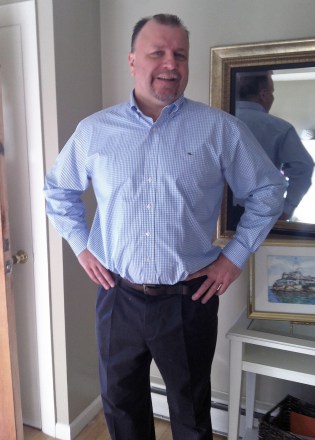
Glenn Shanoski, a 52-year-old electrician, spent 11 days with hospital-level care at home —– offered by Tufts Medical Center in Boston. Tufts provides daily visits from medical teams to closely monitor patients in their homes. (Courtesy of Glenn Shanoski)
Tele-Rehab?
When the coronavirus shut down elective procedures, many physical therapy offices had to close, too. But a number of patients who had recently had surgery or injuries were at a crucial point in recovery.
Therapists scrambled to set up video capability, while their trade association called insurers and regulators to convince them that remote physical therapy should be covered.
At the end of April, the Centers for Medicare & Medicaid Services added remote physical, speech and occupational therapy to the list of medical services it would cover during the pandemic. Just as it had done for other services, the agency said payment would be the same as for an in-person visit.
Though some patient care cannot be done virtually, such as hands-on manipulation of tight muscles, the doctors discovered many advantages: “When you see them in their home, you can see exactly their situation. Rugs lying around on the floor. What hazards are in the environment, what support systems they have,” said Raghavan, the rehabilitation physician at Johns Hopkins. “We can understand their context.”
Using video links, therapists can assess how a patient moves or walks, for example, or demonstrate home exercises. There are also specially designed video-game programs — similar to Nintendo Wii — that utilize motion sensors to help rehabilitation patients improve balance or specific skills.
“Tele-rehab was very much in the research phase and wasn’t deployed on a wide scale,” Raghavan said. Her department now does 9 out of 10 visits remotely, up from zero before March.
Pneumonia Monitoring
Even before the coronavirus emergency, some patients with mild pneumonia were treated as outpatients.
Now, with hospitals busy with COVID-19 cases and patients eager to minimize unneeded exposure, more physicians are considering this option and for sicker patients. The key is using a small device called a pulse oximeter, which clips onto the end of a finger and measures heart rate, while also estimating the proportion of oxygen in the blood. Costing at most a few hundred dollars, and long common in doctors’ offices, clinics and emergency rooms, the tiny machine can be sent home with patients or purchased online.
“We do it on a case-by-case basis,” said Dr. Gary LeRoy, president of the American Academy of Family Physicians. It’s a good option for relatively healthy patients but is not appropriate for those with underlying conditions that could lead them to deteriorate rapidly, such as heart or lung disease or diabetes, he said.
A pulse oximeter reading of 95% to 100% is considered normal. Generally, LeRoy tells patients to call his office if their readings fall below 90%, or if they have symptoms like fever, chills, confusion, increasing cough or fatigue and their levels are in the 91-to-94 range. That could signal a deterioration that requires further assessment and possibly hospitalization.
“Having a personal physician involved in the process is critically important because you need to know the nuances” of the patient’s history, he said.
What It All Looks Like In The Future
Virtual therapy requires patients or their caregivers to accept more responsibility for maintaining the treatment regimen, and also for activities like bathing and taking medicines. In return, patients get the convenience of being at home.
But the biggest wild card in whether current innovations persist may be how generously insurers decide to cover them. If insurers decide to reimburse telehealth at far less than an in-person visit, that “will have a huge impact on continued use,” said Mike Seel, vice president of the consulting firm Freed Associates in California. A related issue is whether insurers will allow patients’ primary caregivers to deliver treatment remotely or require outsourcing to a distant telehealth service, which might leave patients feeling less satisfied.
The industry’s lobbying group, America’s Health Insurance Plans, said the ongoing crisis has shown that telehealth works. But it offered no specifics on future reimbursement, other than encouraging insurers to “closely collaborate” with local care providers.
Whether virtual therapy is cost-effective “remains to be seen,” said USC’s Melnick. And it depends on perspective: It may be cheaper for a hospital to do a virtual physical therapy session, but the patient might not see any savings if insurance doesn’t reduce the out-of-pocket cost.
By Julie Appleby | June 23, 2020
Source: KAISER HEALTH NEWS

